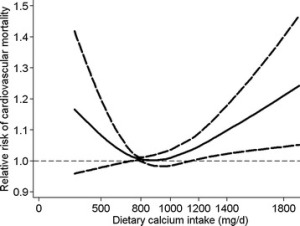Abstract
Invited review: Dairy intake and bone health: a viewpoint from the state of the art.
The aim of this review was to focus on the complex relationships between milk and dairy products intake and bone health, with particular emphasis on osteoporosis. The literature was extensively examined to provide an objective overview of the most significant achievements on the subject. Osteoporosis can be defined as a disease characterized by low bone mass and microarchitectural deterioration of bone tissue, leading to enhanced bone fragility and a consequent increase in fracture risk. Although the major determinants of peak bone mass and strength are genetic, major factors during childhood and adolescence may affect the ability to achieve peak bone mass. These include nutrition, particularly calcium and protein intake, physical activity, endocrine status, as well as exposure to a wide variety of risk factors. The role of calcium intake in determining bone mineral mass is well recognized to be the most critical nutritional factor to achieve optimal peak bone mass. The greatest amount of dietary calcium is obtained from milk and dairy foods, which also provide the human diet with vitamin D (particularly for products fortified with vitamin D), potassium, and other macro- and micronutrients. Although studies supporting the beneficial effects of milk or calcium on bone health are predominant in the literature, perplexity or discordance on this subject was expressed by some authors. Discordant data, mainly on the risk of fractures, provided limited proof of the unfavorable effect of dairy intake. More often, discordant works indicate no effect of dairy consumption on bone safety. Some considerations can be drawn from this viewpoint. Milk and dairy products are an optimal source of calcium as well as of other limiting nutrients (e.g., potassium and magnesium), with important effects on bone health. Bioactive components occurring in milk and dairy products may play an essential role on bone metabolism, as shown by in vivo and in vitro studies on colostrum acidic proteins and milk basic proteins. Calcium intake positively affects bone mass and is crucial in childhood and youth for correct bone development. In elderly people, calcium intake as well as vitamin D availability should be carefully checked. As a general conclusion, calcium is essential for bone health, although it will not prevent bone loss due to other factors; in this context, milk and dairy foods are bioavailable, relatively inexpensive sources of calcium for the human diet.
Caroli A, Poli A, Ricotta D, Banfi G…
J. Dairy Sci. Nov 2011
PMID: 22032348 | Free Full Text
This article reviews some of the negative studies on dairy for bones. Including this study. The article concludes with:
In any case, some general conclusions can be drawn. First, milk and dairy products are an optimal source of calcium as well as other limiting nutrients (e.g., potassium and magnesium), with important effects on bone health. Bioactive components occurring in milk and dairy products may play an essential role in bone metabolism, as shown by colostrum acidic proteins and MBP. Calcium intake positively affects bone mass and is crucial in childhood and youth for correct bone development. In elderly people, calcium intake as well as vitamin D availability should be carefully checked. The literature reporting favorable effects of milk and dairy products on bone is highly predominant compared with contradictory papers, including discordant and perplexing works. Discordant data, mainly on the risk of fractures, provided limited proof of the unfavorable effects of dairy intake. The majority of the contradictory papers indicate that dairy consumption does not alter bone safety. The best conclusion comes from Lindsay and Nieves (1994):
“Calcium will not prevent the bone loss due to other factors . . . nonetheless, milk is a bioavailable, relatively inexpensive source of calcium for those who can ingest it.”


